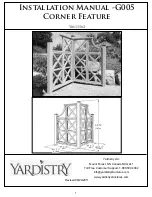
162
SCAN-LAN VI
DECnet —
A proprietary Ethernet LAN developed by Digital Equipment
Corporation.
Delay —
A measure of the time electrical signals take to propagate from
one end of the cable to the other end.
Delay Skew —
The difference in propagation delays from one cable pair
to another.
Differential Manchester Encoding —
A digital signaling technique with
a transition in the middle of the bit to provide clocking.
Drop Cable —
In 10BASE5 networks, a cable connecting a workstation
network interface card (NIC) with the transmission medium. Sometimes
called Attachment Unit Interface (AUI) cable.
EIA —
Electronic Industry Association.
EMI (Electromagnetic Interference) —
Leakage of electromagnetic energy
outside of a transmission medium.
Ethernet —
A high-speed local area network using the Carrier Sense
Multiple Access with Collision Detection (CSMA/CD) media-access
method.
Far End Crosstalk (FEXT) —
Crosstalk that is measured at the opposite
end of a cable from where the signal is injected.
Fault —
Any accidental condition that causes a component to fail.
FCC—
Federal Communications Commission.
FDDI (Fiber Distributed Data Interface) —
A network standard (ANSI
X3T9.5) that defines a 100-Mbps token-ring network using optical fiber
for data transmission over distances of several kilometers.
Fiber —
A transmission medium designed to transmit data in the form
of light pulses.
File Server —
A high-capacity file-storage device that computers on
a network can access to retrieve files.
Foil Twisted Pair (FTP) —
See
Screened Twisted Pair
.
Frame —
A unit of transmission in some LANs such as Token Ring.
Summary of Contents for SCAN-LAN VI
Page 2: ......









































